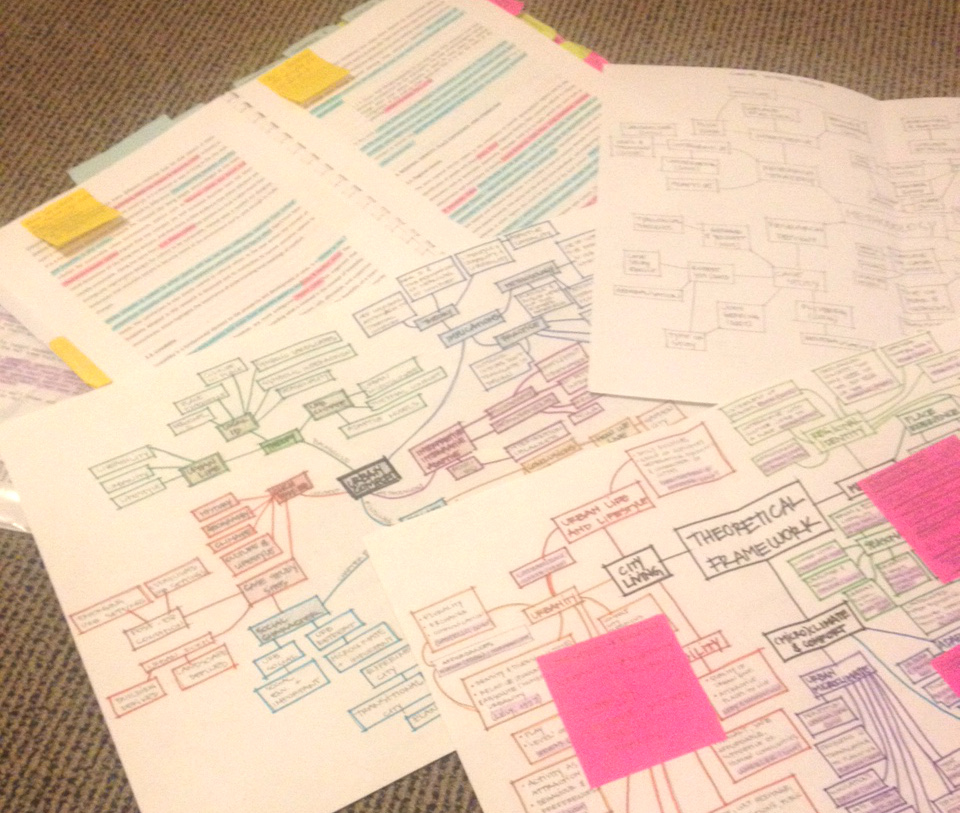How I prepared for the PhD Oral Exam
My PhD Oral Exam was last Monday (18th May). The exam here in New Zealand is different from what I have seen described by other PhD candidates in viva and defense-related posts. So it is worth starting with its peculiarities.
At Lincoln University the exam is not public and in the examination room were present myself, three examiners and a convenor. In total there are four examiners: a local one who is present at the exam (he/she can be from New Zealand or Australia), an international examiner who sends their report, and the supervisors. The supervisors are turned into examiners as soon as we submit the thesis[1]. There is a good side to it – they know the thesis very well and we’d already know if they thought it wasn’t good enough – but there is also a bad side, which is the sense of helplessness.
I submitted the thesis on the 3rd of July 2014, but due to circumstances out of my or my supervisors’ control, it was over ten months between thesis submission and oral exam. Annoying indeed, but as Stephen King suggests on his On Writing: A memoir of the craft we should always leave our writings at least six weeks out of touch, until we can ‘see the forest instead of focusing on the trees’. So it was frustrating, but it made the big picture much clearer.
In this meantime I lived for six months in Germany, and started preparing for the exam a couple of times, but soon stopped as I didn’t have any idea of when it would happen. I then decided I’d just prepare once the date was set. However, I wasn’t completely distant from it, as there were a couple of journal articles on the make which were based upon the thesis. During this period I also read the book Fail Your Viva: Twelve Steps To Failing Your PhD (And Fifty-Eight Tips For Passing) by Nathan Ryder, which I highly recommend.
When the PhD Oral Exam was finally arranged I had 20 days to prepare. So I took a monthly planner, wrote down the days I had left, and what I wanted to do. And here is how it worked:
- I went back to many online articles and blog posts I had saved which had testimonials of people who have been through it, who have given advice and written about the most common asked questions. I copied and printed three pages of these common questions.
- Read the full thesis and used two different coloured markers: one for key ideas, another to all the references, which had been inserted using Endnote (I have written about Endnote here and here). While reading the thesis I also added some more questions to the list, which were specific to my research.
- I used post-it notes to mark ideas that seemed unclear (the advantage of having over ten months to forget the nuances of what I had written!) or that could be elaborated. I also marked chapters and main concepts using different colour of post-it notes.
- English is not my first language and I knew I’d find typos in the text. And I did. So I made a list and fixed them on the original document. The list consisted of comments such as “pg 34 – substitute Faifax by Fairfax”. If it was mentioned by the examiner I had it covered – it wasn’t mentioned.
- After reading the thesis once I felt the need to see the big picture, and then I decided to make a mind map of it all. I should admit I have never found mind maps very useful. They usually look like an endless web. But this time, as the research had a proper end, I thought putting it into a diagram could help. And it did.
- I was still uncomfortable with the literature. I knew well the authors I had cited, but had forgotten why I decided not to use some others. So I made a mind map of the theoretical framework with the main ideas and authors.
- The last one – and when some people around me started saying I was ‘overpreparing’ – was when I decided to adopt a mind map to the methodology as well. This mind map combined different areas of knowledge and research methods, and the main authors I had followed.
- I went back to the presentation started many months before, finished it and presented a ‘mock oral’ to four colleagues from the School of Landscape Architecture at Lincoln University. I considered not doing it, as I had presented my research a few times in Germany and here in New Zealand, but my co-supervisor insisted this was a good idea, and it was the best thing I could have done! Around 80% of the questions those bright ladies asked, were asked by the examiners.
- I reached out for the twitter peeps and added their tips to Storify.
- I re-read the introduction, methodology and conclusion for the second time, and here I finally felt it was enough.
I was nervous beforehand, but was fine at the time. The exam went well and took around 2 and a half hours in total. It was in the end a very pleasant experience to discuss with three experts the ideas that took most of my time in the past four years. In a future post I will write about how the oral exam actually happened, the structure, questions and challenges.
* * *
Note:
1. The system has recently changed at Lincoln University.
* * *
Other articles about PhD defense, viva and oral exam:
